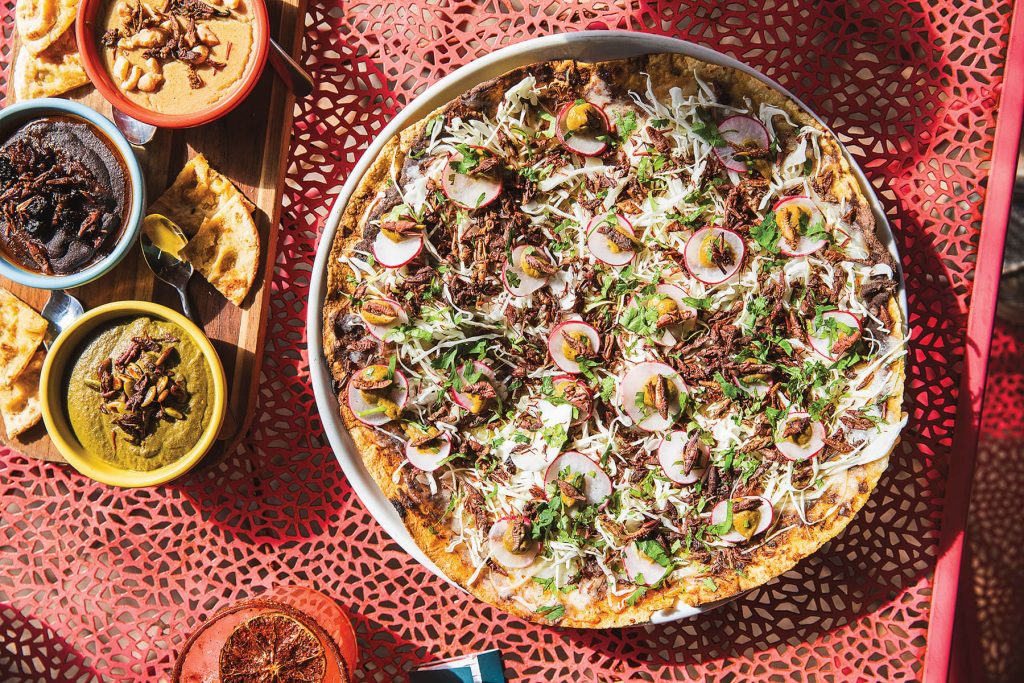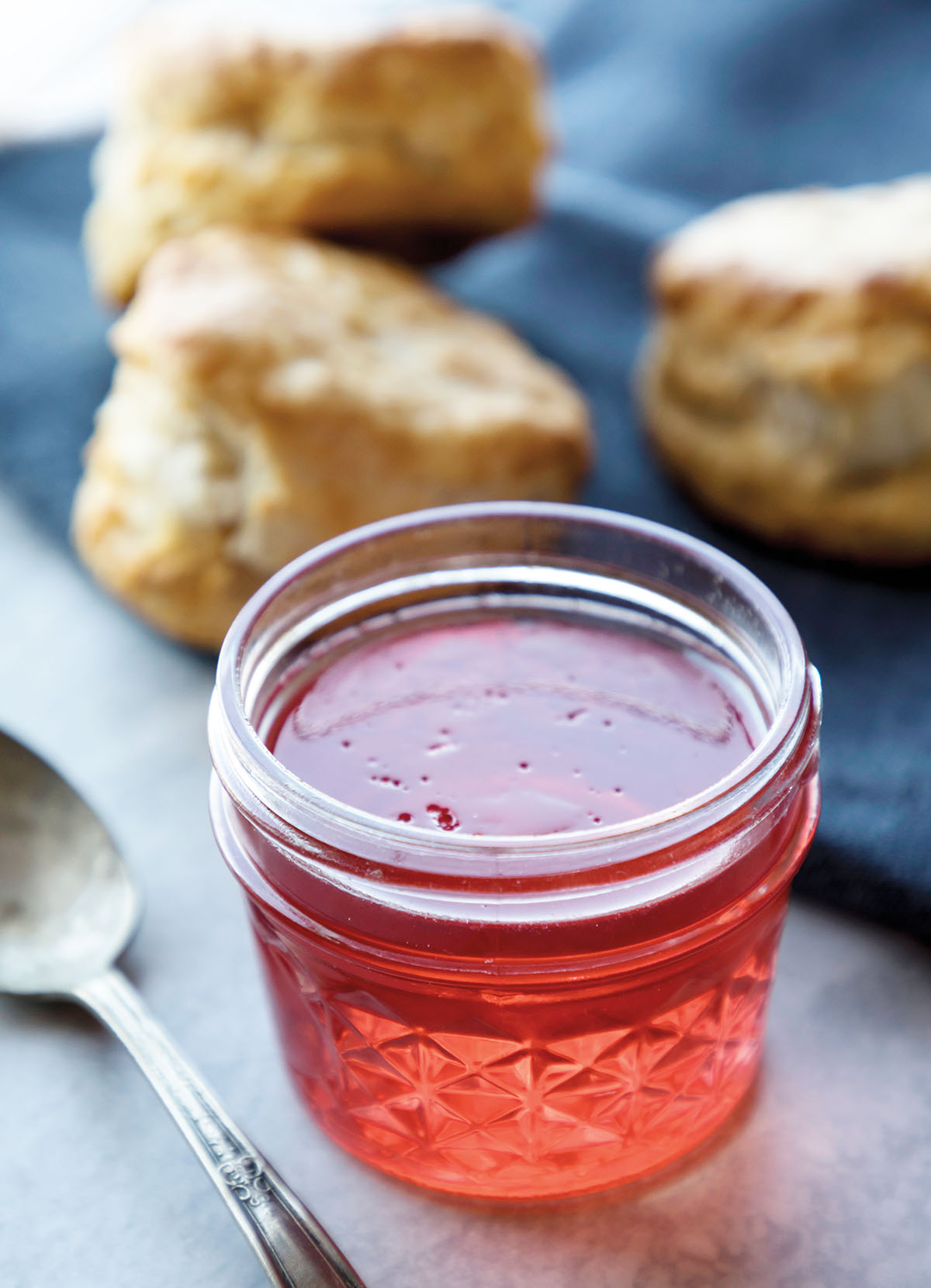
In the February drabness of bare-branched hardwoods, frothy white flowers burst from small thorny trees deep in the understory of the East Texas Piney Woods.
Generations of families have noted their locations—sometimes flagging the trees with orange tape, ribbon, or twine—to be able to find the trees again once the canopy leafed out. For by May, the white blossoms of these trees will become clusters of firm red berries called mayhaws. They’ve been prized since antebellum times as a source for syrup, wine, and especially jelly—similar in flavor to tart apple, but with a sassy, wild kick.
Found across the Deep South and only north and east of the Trinity River in Texas, these thorny hawthorn trees traditionally grow around nearly impenetrable soupy hardwood bogs called “baygalls”—smaller, and often shallower, than swamps. As deforestation increases and their natural habitat shrinks, wild mayhaw trees are becoming increasingly rare, yet the hunger for mayhaw jelly shows no signs of waning.
Wynn and Pam Havard’s Jellytree Mayhaw Farm in Huntington, one of the handful of East Texas’ mayhaw orchards, hopes to satisfy this appetite with its handcrafted mayhaw jelly.
The Havards sit on the porch of their commercial canning kitchen, housed in a cabin a few hundred yards from their residence. Behind the canning kitchen, mayhaw trees stand at attention in orderly rows spanning 3 acres. Inside the canning kitchen, half-pint jars of mayhaw jelly and 8-ounce bottles of mayhaw syrup glisten on the front counter.
Wynn, whose robust nature belies his 70-plus years, settles into a chair to reminisce while Pam proffers a plate of her mayhaw jelly-filled thumbprint cookies.
“As a youngster, I helped my family gather mayhaws each May,” Wynn says. “We’d hook up the horses to a sled and drag it out to an old open pond and the nearby baygalls. The mayhaws would be floating in the water, so we would walk around in the water and scoop them up with sieves, then pour them into No. 3 washtubs on the sled.”
Jellytree Mayhaw Farm
493 Ozias Road, Huntington. Open Tue 10 a.m.-2 p.m.
936-676-6302;
facebook.com/jellytreefarms
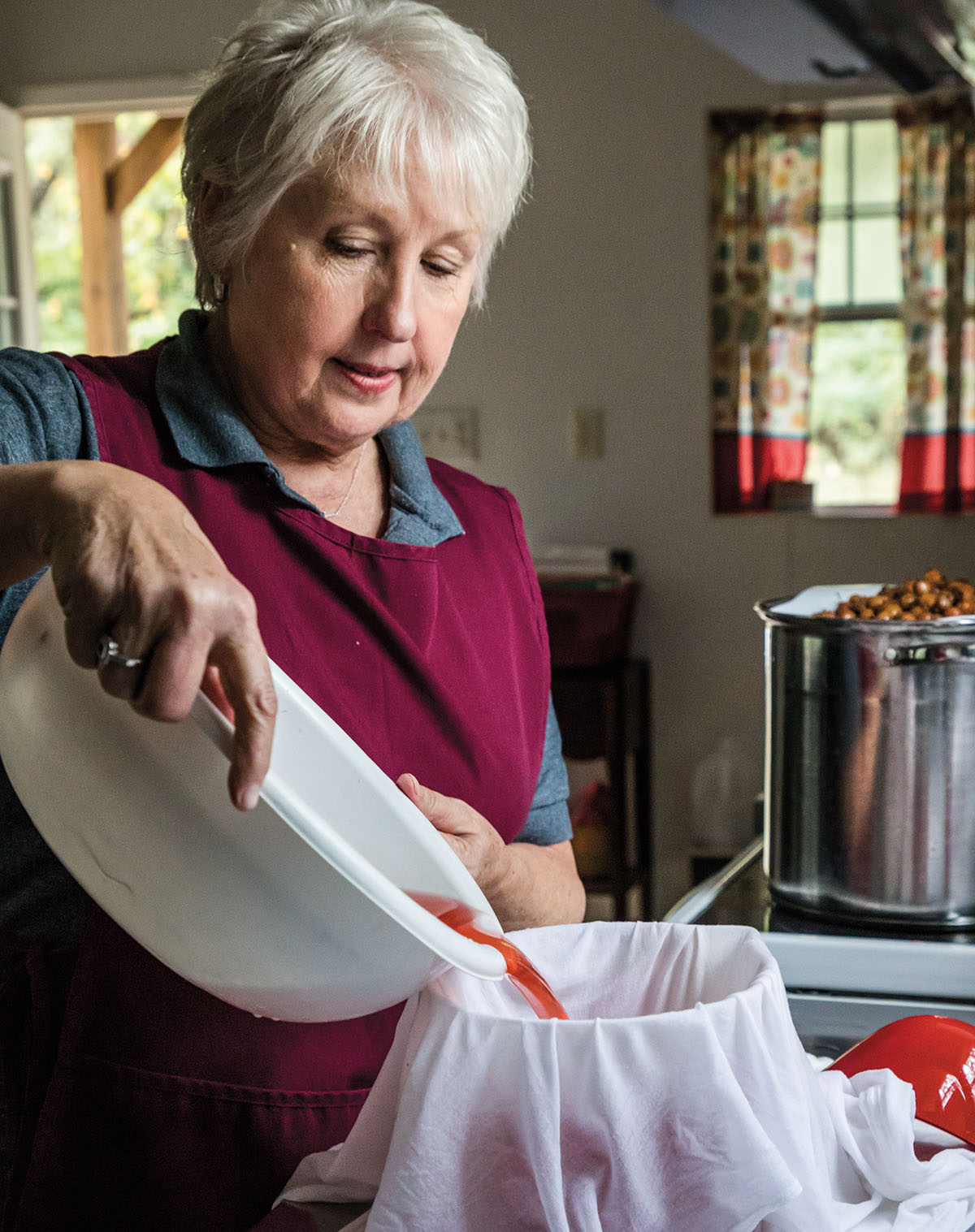
Families worked together in the jelly-making process, first boiling the fruit with water, sugar, and pectin before straining and pouring it into glass jars to turn this ephemeral springtime fruit into a yearround treat. East Texans slather the jelly on hot buttered biscuits, use it as a base for sauces, and add it to pies and cakes. Mayhaw syrup poured onto pancakes or waffles elevates a breakfast staple to a
culinary delight.
The couple, who will celebrate their 50th wedding anniversary later this year, began its mayhaw orchard venture about six years ago. Wynn tends the approximately 125 trees while Pam helms the commercial kitchen operation. “I worked in the food service industry for 10 years before going to nursing school,” Pam says, “and as a nurse, I did kitchen inspections for assisted-living facilities. That experience gave me a head start in setting up my commercial kitchen.
“After Wynn retired from the Post Office and I retired from my nursing career, we saw this as something we could do together,” she says, noting their regular presence at the Angelina County Farmers Market. In 2018, they canned 1,768 jars of jelly—primarily for sale at their farm, the farmers market, and The Candle & Gift Shoppe in Lufkin.
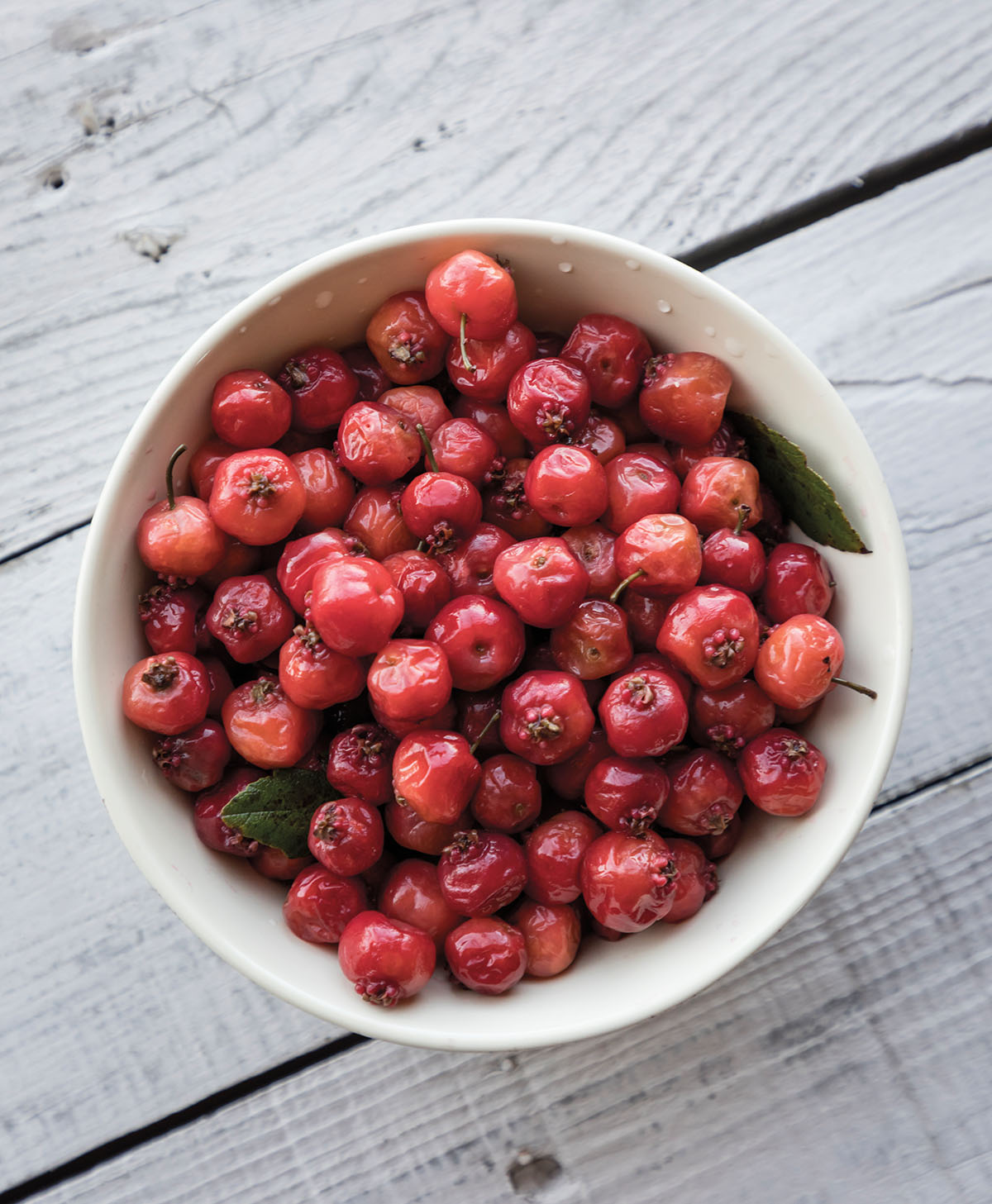
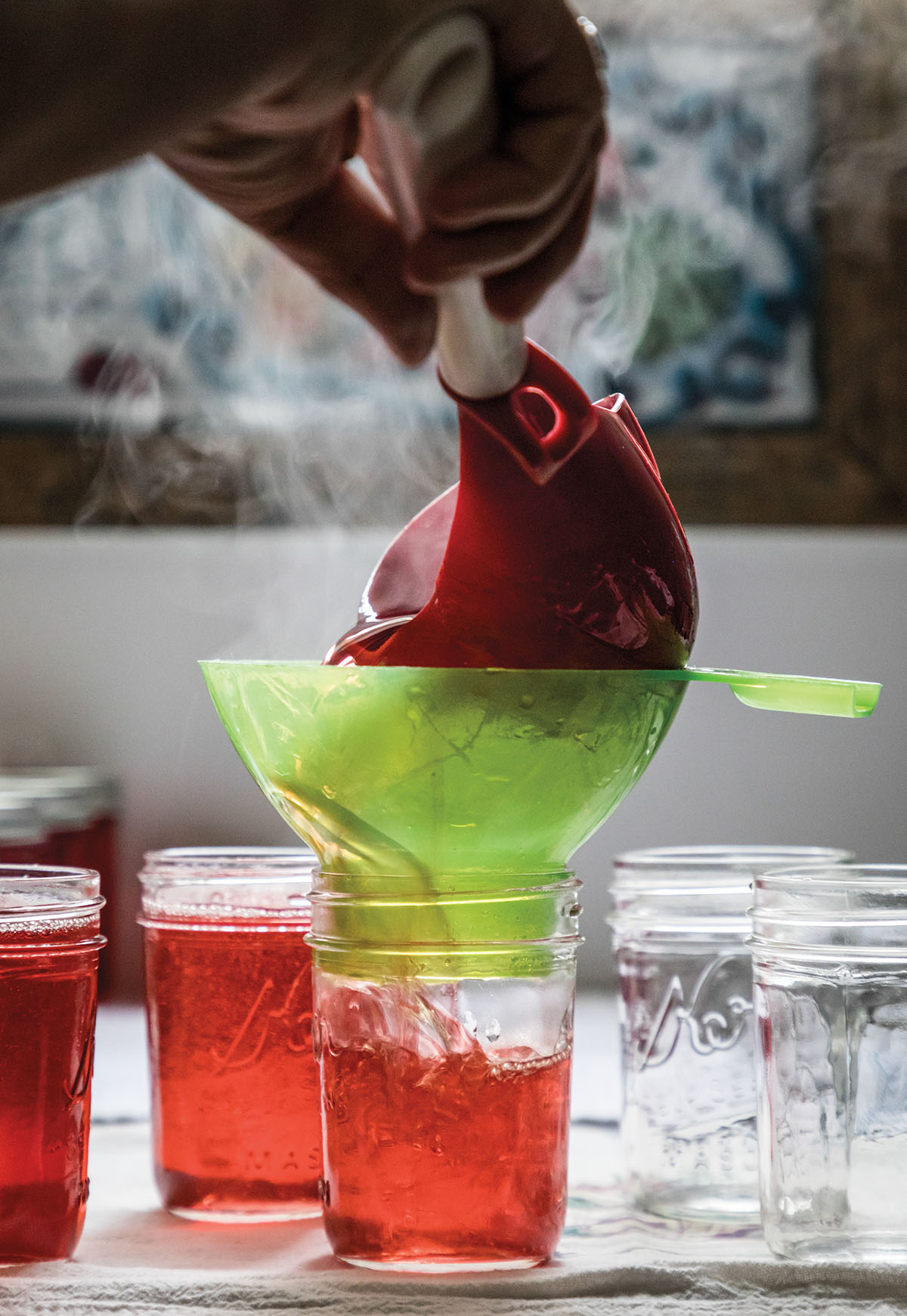
Pam relies on a simple formula: just mayhaws, sugar, and Sure-Jell (a brand of pectin). “Wynn sterilizes the jars while I make batches of jelly,” she says, noting that jelly needs to be cooked in relatively small batches to gel properly. “My favorite thing about making mayhaw jelly is keeping the old ways and traditions alive,” she adds. “It’s culture, history, family, and society all rolled together.”
In fact, Pam still makes her jellies in an ancient Farberware jelly pot that belonged to Wynn’s mother. She also markets limited amounts of her other wild jellies including muscadine, American beautyberry, and redbud blossom; specialty jellies including peach-habanero and pepper; strawberry and blueberry jams; and other sweet treats such as peanut brittle over the winter holidays. “Jams and jellies vary by season,” she says, “but we almost always have mayhaw jelly.”
“My favorite thing about making mayhaw jelly is keeping the old ways and traditions alive. It’s culture, history, family, and society all rolled together.”
Jellytree’s farm store is open on jelly-making days: Tuesdays 10 a.m. to 2 p.m. throughout the year. “Any other times, folks can call first, and I’ll meet them there,” Pam says, adding that she also takes phone orders and ships jellies. The harvest window is very short—around the third week of May—so Pam advises foragers to store the berries in the freezer until jelly-making time. “Mayhaws freeze quite well,” she says. “In fact, I think the jelly from frozen ones is superior. The freezing and thawing ruptures the cells’ walls, releasing more juice and flavor.”
Even with the bounty their orchard provides, the Havards treasure the tradition of foraging for this East Texas delicacy. It’s a portal to the past, a touchstone with ancestors, and a ritual they relish sharing with their grandchildren.
“We still like to gather the wild ones,” Wynn confesses. “We’ll take our boat down to Sam Rayburn Reservoir near Mud Creek and scoop them up with a sieve, just as I did as a boy.”
In fact, the jelly Pam made from wild berries took first place in the 2019 Angelina County Fair, with Wynn’s jelly from his cultivated mayhaws coming in second.
He’s hoping to reverse that order in 2020, he admits with a grin.



